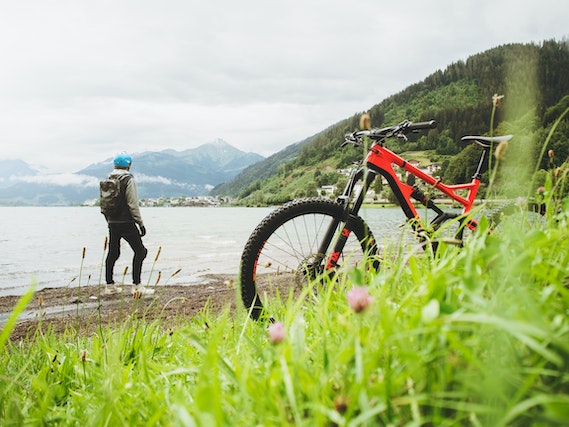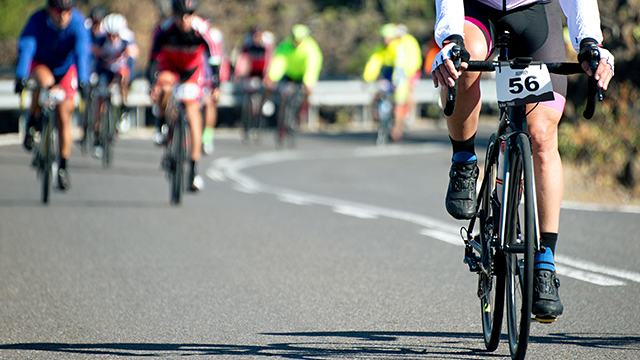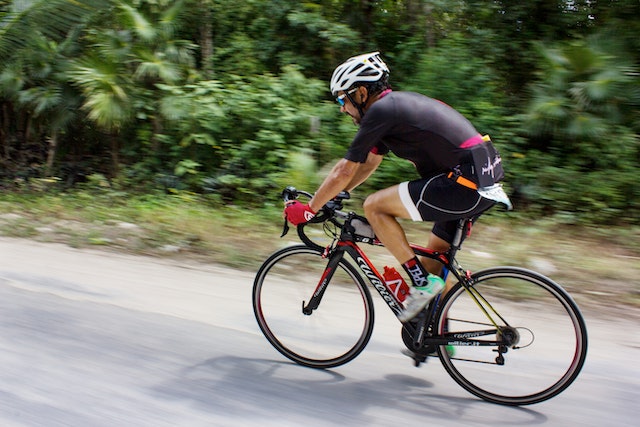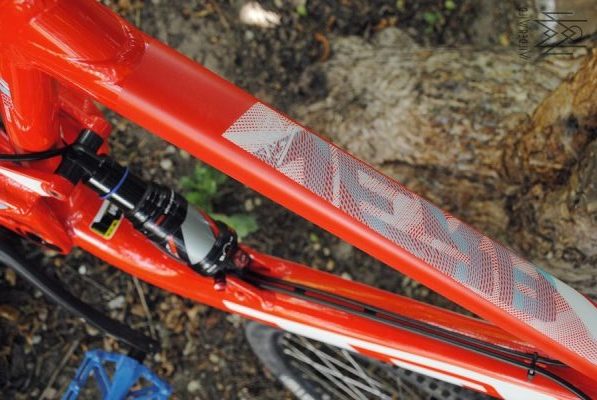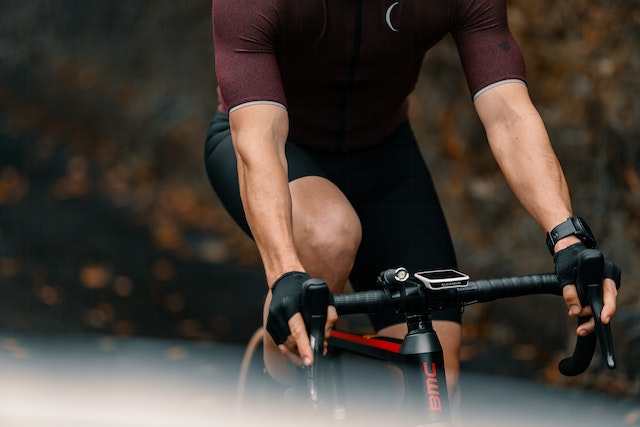Do you ever find yourself staring up at a daunting hill, wondering how on earth you’re going to conquer it on your bike? Don’t worry, you’re not alone. Hill climbing can be a challenging and intimidating part of cycling, but with the right techniques and mindset, you can become a master of the climbs.
In this article, we’re going to explore how you can improve your hill-climbing skills and conquer those inclines with confidence and ease. From proper gear selection to improving your pedaling technique, we’ll cover all the essential tips and tricks. We’ll also dive into building leg strength and endurance, as well as pacing yourself on the climb. And don’t forget about the mental strategies that can make all the difference when tackling those hills.
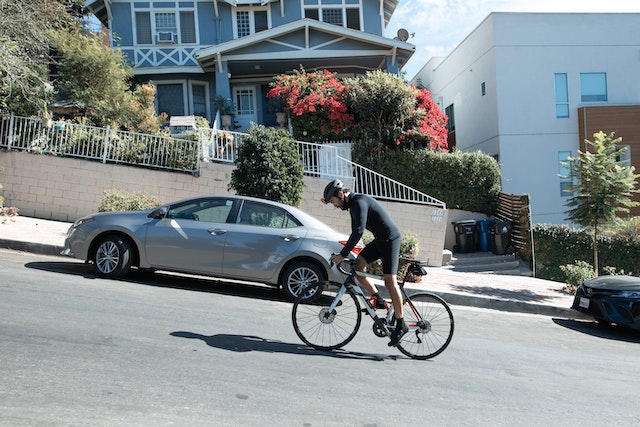
So, if you’re ready to join the ranks of the hill-climbing elite, let’s get started!
1. Proper Gear Selection
If you want to improve your hill climbing on the bike, it’s crucial to focus on proper gear selection. Choosing the right gear can make a world of difference when it comes to tackling those challenging inclines. So, let’s dive into some tips that will help you conquer those hills like a pro!
First and foremost, make sure you’re familiar with your bike’s gears. Take the time to understand how they work and what each gear does. This knowledge will empower you to select the appropriate gear for each hill you encounter. Remember, the goal is to maintain a steady cadence, so choose a gear that allows you to pedal comfortably without straining your legs too much.
When approaching a hill, shift down to a lower gear before you start climbing. This will help you maintain momentum and prevent you from exerting too much energy at the beginning. As you ascend, keep an eye on the road ahead and anticipate any changes in gradient. If you notice the hill is becoming steeper, shift to an even lower gear to keep your cadence steady.
Lastly, practice is key. The more you ride hills, the better you’ll become at gear selection. Challenge yourself with different types of hills and experiment with different gears to find what works best for you. With time and dedication, you’ll be conquering those hills with ease and gaining the respect of your fellow riders. So, keep pushing yourself and never give up. You’ve got this!
2. Improving Your Pedaling Technique
To become a stronger hill climber on your bike, it’s essential to refine your pedal technique. Improving your pedaling technique can make a significant difference in your ability to conquer those challenging uphill battles. So, let’s dive into some tips to help you pedal like a pro.
First, focus on maintaining a smooth and consistent pedal stroke. Avoid stomping down on the pedals or pushing too hard in one part of the stroke. Instead, aim for a circular motion, applying even pressure throughout the rotation. This will not only help you generate more power but also reduce wasted energy.
Next, pay attention to your cadence. Cadence refers to the number of pedal revolutions per minute. Aim for a cadence of around 80-90 revolutions per minute when climbing. This will help you maintain a steady rhythm and prevent your legs from fatiguing too quickly.
Another important aspect of the pedaling technique is to engage your core and upper body. By keeping your upper body stable and relaxed, you can transfer more power to the pedals. Focus on keeping a firm grip on the handlebars, but avoid tensing up your arms and shoulders.
Lastly, practice hill repeats to build your strength and endurance. Find a hill that challenges you but is still manageable, and repeat climbing it multiple times. Over time, you’ll notice improvements in your pedaling technique and your ability to tackle steeper and longer climbs.
Remember, becoming a better hill climber takes time and practice. So, keep pushing yourself, and soon enough, you’ll be conquering those hills with ease. Happy climbing!
3. Building Leg Strength and Endurance
Building leg strength and endurance is essential for tackling challenging uphill battles and conquering steep climbs on your bicycle. To improve your hill climbing abilities, focus on these key exercises and techniques:
- Squats: Incorporate squats into your workout routine to strengthen your quadriceps, hamstrings, and glutes. Start with bodyweight squats and gradually add weights as you get stronger.
- Lunges: Lunges are great for targeting your quads, hamstrings, and glutes. Perform forward lunges, reverse lunges, and lateral lunges to work different muscle groups.
- Cycling intervals: Include interval training in your cycling workouts to build both strength and endurance. Alternate between high-intensity sprints and recovery periods to simulate the demands of hill climbs.
- Hill repeats: Find a challenging hill and do repeated climbs. This will not only build leg strength but also improve your mental toughness and ability to push through fatigue.
- Cross-training: Engage in activities like hiking, running, or swimming to work for different muscle groups and improve overall fitness.
By incorporating these exercises and techniques into your training routine, you’ll notice significant improvements in your leg strength and endurance, ultimately making you a stronger and more confident hill climber. Remember, consistency and patience are key. Keep pushing yourself and enjoy the journey of becoming a better cyclist.
4. Pacing Yourself on the Climb
As you ascend the hill, imagine yourself as a graceful bird soaring effortlessly through the sky, maintaining a steady pace that allows you to conquer the climb with ease. Pacing yourself on the climb is crucial to build endurance and improve your hill climbing skills. It’s all about finding the right rhythm that suits you and your bike.
In order to pace yourself effectively, it’s helpful to understand the three key elements: cadence, gear selection, and body positioning. The table below breaks down these elements and provides tips on how to optimize each one:
| Cadence | Gear Selection | Body Positioning |
|---|---|---|
| Find a comfortable rhythm with consistent pedal strokes. | Choose the right gear for each section of the climb. | Maintain an upright posture to maximize your breathing and power. |
| Aim for a cadence of 70-90 revolutions per minute. | Shift to an easier gear before the climb gets too steep. | Keep your weight centered over the bike to maintain traction. |
| Listen to your body and adjust your cadence as needed. | Anticipate changes in terrain and adjust gears accordingly. | Relax your upper body and engage your core for stability. |
By paying attention to these elements and finding your own balance, you can pace yourself effectively and conquer those challenging climbs with confidence. Remember, it’s not just about reaching the top, but enjoying the journey and feeling a sense of belonging in the cycling community. So spread your wings, find your rhythm, and soar up those hills with grace and ease.
5. Mental Strategies for Conquering Hills
Imagine yourself at the base of a steep hill, your mind focused and determined as you visualize conquering the challenging slope ahead. As you prepare to tackle this hill, remember that conquering it requires not just physical strength, but also mental strategies. By adopting the right mindset, you can overcome any hill that stands in your way.
Here are three mental strategies that can help you conquer hills and improve your hill-climbing skills:
- Positive self-talk: Fill your mind with positive thoughts and affirmations. Remind yourself that you’re strong, capable, and deserving of success. Repeat encouraging phrases like “I can do this” or “I’m unstoppable” to boost your confidence and motivation.
- Break it down: Instead of focusing on the entire hill, break it down into smaller sections. Set mini-goals for yourself, such as reaching a certain landmark or maintaining a steady pace for a specific distance. By focusing on these smaller goals, the climb becomes more manageable and less overwhelming.
- Visualization: Close your eyes and visualize yourself effortlessly climbing the hill. Imagine the feeling of strength and accomplishment as you reach the top. Visualizing success can help you build mental resilience and increase your belief in your ability to conquer any hill.
By incorporating these mental strategies into your hill-climbing routine, you can enhance your performance and conquer hills with confidence. Remember, your mind is just as important as your physical strength when it comes to becoming a better hill climber. Embrace these strategies and watch yourself soar to new heights.
Frequently Asked Questions
How do I prevent my bike from slipping or losing traction while hill climbing?
To prevent your bike from slipping or losing traction while hill climbing, make sure your tires have a good grip and are properly inflated. Shift to a lower gear and maintain a steady pedal cadence. Lean forward and distribute your weight evenly to maintain balance.
Are there any specific warm-up exercises I should do before attempting hill climbs?
To prepare for hill climbs, warm up with dynamic stretches like leg swings and lunges. Then, do some light pedaling to get your muscles warmed up. This will help improve your performance and reduce the risk of injury.
Can the type of bike I ride affect my hill climbing performance?
Yes, the type of bike you ride can affect your hill-climbing performance. Bikes with lighter frames, more gears, and lower gearing ratios are typically better suited for uphill climbs.
How do I stay motivated during challenging hill climbs?
To stay motivated during challenging hill climbs, set small achievable goals, focus on your progress, and remind yourself of why you love cycling. Surround yourself with supportive friends or join a cycling group for encouragement and a sense of belonging.
Are there any common mistakes beginners make while hill climbing that I should avoid?
Avoid common mistakes while hill climbing to improve: maintaining a steady cadence, shifting gears properly, using correct body positioning, and pacing yourself. These tips will help you conquer hills with confidence and improve your overall performance.
Conclusion
So there you have it, fellow cycling enthusiast! You now have the tools to conquer those daunting hills with confidence. Remember, practice makes perfect, so keep pushing yourself to improve.
Don’t let the uphill battle discourage you; instead, use it as an opportunity to reach new heights. With the proper gear selection, pedal technique, leg strength, pacing, and mental strategies, you’ll be climbing like a pro in no time. So, gear up, get on your bike, and let the mountains become your playground! The sky’s the limit!
